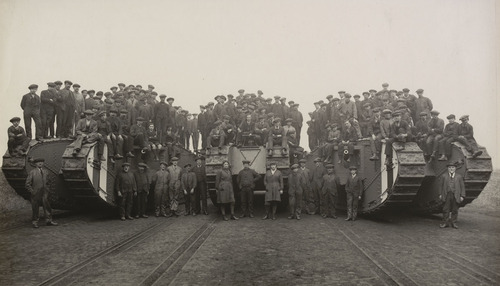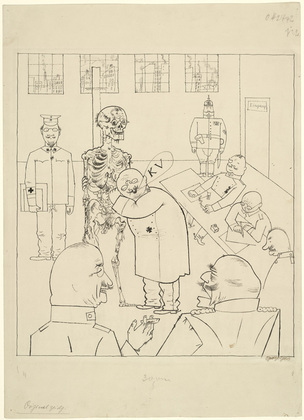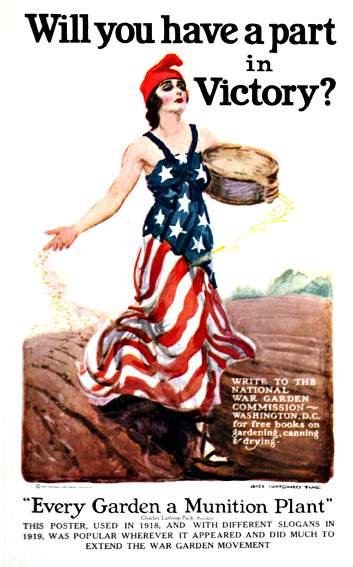Introduction to the sociology of art
Art and society are in a state of continuous, mutual dependence, which propagates itself like a chain reaction. This only implies that they influence each other, that society is modified by art whose product it is, and that art in a given society confronts a structure which presupposes many of its characteristics’, but also that every change in one sphere is linked to change in the other (Perkins and Horward, 13). This calls forth a further change in the system in which the change originates. Every step sets the clockwork in motion; to express it visually; the pictures on both sides reflect each other in endless refractions, looking like a hall of mirrors.
This way, there is a constant multiplication and intensification of stimuli, a restless rush, and jockeying for the position in the race of competing social and artistic forces without which the interchange would take on a dialectical character (Hauser 24). It is simply the question of interdependence between the individual phases of two developmental; series. There is no actual struggle between the opposing positions to buy an inner contradiction that drives them on, keeps them in motion, and spurs them toward a settlement.
The relationship between art and society is in some ways like the relationship between body and soul: neither are they contradictory, nor can they be in harmony (Zolberg 37). Whether it is in the genesis of individual works, the act of reception, or the course of the history of style, the dialectical development of art does not proceed from the antagonism between social and artistic interests. It results from conflicting artistic intentions, problems, possibilities of the solution, and means of representation.
Simply put, it is the result of individual differentiation, of a change in taste and style which social development only provides the spur to, but which does not proceed from a contradiction between art and society. An antithetical attitude is not antagonism, and interaction is not a dialectical dispute. There are antagonisms within society and within art, but there is none between society and art (Alexander 46).
On the one hand, the fact that society influences art, and on the other hand, that art influences society does not imply that a change goes with a change with the other. Art and society exist as two discrete, though not necessarily isolated, realities side by side with each other (Zolberg 92). They neither correspond to nor contradict each other. They neither divide nor unite each other; however, deep the traces the one leaves upon the structure of the other.
As indicated earlier, they are like body and soul, indivisible, but they have no common aim or meaning. Therefore, their reciprocal relationship is quite different from the relationship in art between spontaneity and convention, between the will to expression and its means, between form and content (Alexander 48). The study of art encourages anthropologists to deal with the temporality of cultural processes, to connect the experimental dimension of culture, the immediacy of performance with longer-term and more general processes. Works of art have different durations.
Art can be one of the channels through which the image of a culture is conveyed across time and space (Hauser 84). However, the images created in this way often involve cultural stereotypes that belong to the consuming culture rather than the producing culture. The processes of selection and interpretation can create a simplified, essentialized, a temporal image of a particular society which bears little relation to its recent history or contemporary existence (Perkins and Horward 62).
However, the critique of the appropriation of art to create a representation of other cultures must not itself be essentialized to cover all places and times. It has been recognized that such essentialization denies the agency of indigenous peoples in both the past and present. Indigenous people have often used art as a means of economic survival, as a demonstration of skills and cultural values, and as a means to assert cultural identity in a changing world (Hauser 113).
Changing anthropological ideas has impacted the role art galleries and museums play as repositories of cultural artifacts. Two almost unrelated processes have made exciting places. First, they have been properly recognized as valued repositories of cultural and historical archives providing a resource that allows for the reanalysis of contact history, colonial processes, material culture changes, and so on (Hauser 114). Second, indigenous peoples have discovered their pasts in the collections.
They are using museums as a means of accepting the loss. For instance, they see the preservation of past histories as a source of strength, giving them unique identities within the nation, states that have incorporated them. Museums and art galleries have become spaces for contesting the stereotyped images of the past and challenging the assumptions of the present (Alexander 86).
Thematic analysis of a photograph and a picture from the Museum of Modern Arts (MoMA) in New York
In a contemporary context, the notion of the museum has, like, art, been exported and differentially adopted or rejected, based upon its relevance to a particular nation or range of cultures. Collection, preservation, and display are now no longer the province of museums as Western institutions. They have entered a cross-cultural space where their value is reappraised (Perkins and Horward 79). Significant yet invigorating challenges to art institutions are presented by the participation of artists with different cultural backgrounds. Contemporary artists producing work in styles that range from historical to experimental have increasingly engaged with art institutions and, in so doing, presented alternative conceptions of art as cultural knowledge (Hauser 118).
As mentioned earlier, art is very much related to society. To understand the relationship between art and society, this report examines several photographs.

The picture above brings fresh memories of World War 1 (Museum of Modern Arts. org). World War 1 was also called ”The Great War”. Other terms used to refer to the war also include such notions as ‘The War to End All Wars’ (Tucker and Roberts 27). The main participants in World War 1 include Great Britain, France, the United States, and Russia. All these Allied nations fought on the same side against Central powers. The latter included Germany, Austria-Hungary, and Turkey. The use of sophisticated weapons marked world War 1 despite the fact the world had not experienced the technological advancements present today. One such weapon used in the war was tanks.
World War 1 saw the first encounter between rival tanks on the battlefield. It took place on April 24, 1918, outside the village of Villers-Bretonneux on the western front (Tucker and Roberts 36). It involved Britain and German tanks and lasted for one hour. Battles in which one group of tanks fights against another are a common feature of all modern wars. However, they were very rare during World War 1. This is because, while the British, French, and later the U.S. Armies deployed many tanks in their battle from the fall of 1916, there were very few tanks on the German side for them to fight against (Tucker and Roberts 57).
Germany made the only type of tank, the A7V, during the war, and these only came into service in early 1918. In the end, only about 20 A7Vs were ever built, compared with the many hundreds of Allied machines that would fight in all the major battles later in 1918 (Doeden 68). Generally, the Germans made use of captured Allied, usually British tanks. There probably only two occasions in the war when the tank fought against the tank.
The action at Villers-Bretonneux took place during the series of great German offensives on the western front in the spring of the final year of the conflict. Therefore, the above photograph from the MoMA collection refreshes the memories of the battlefronts in World War 1 between Central powers and Allied forces. It also enlivens the role of Britain in the war, as it was very instrumental. The U.S. only entered the war in 1917, a year before it ended.
The second picture from MoMA that is going to show the relationship between art and society is shown below.

The above picture by George Grosz expresses resentment that accompanied the aftermath of World War 1. Just like many of his generation, Grosz had volunteered to fight in the war. The experience he got from the war changed his artistic approach significantly. It was affected by his encounters in battlefields with death and destruction. He developed resentment for war and the Germans in general. This is evident from the way he depicts German militarism in the above picture. This perception led to his dislike for Germans, whom he considered ugly, obese, and degenerate (Museum of Modern Arts. org 1).
The picture serves the purpose of depicting the kind of perceptions the war soldiers had even after the war ended. Many of them died in the battles. Many were alienated from their families. Some survived the ordeal but sustained injuries that led to mental or physical incapacitation (Museum of Modern Arts. org 2). At one time, Grosz was admitted to a mental hospital and was consequently discharged from the war as unfit.
As such, this picture is a depiction of the kind of perceptions of war that society had after the World War. The war had served as a lesson that battlefields were not the best solutions for arriving at an agreement. Ideal peace could not be gotten from battlefronts. War is never a solution for peace. Even today, memories of that war are still fresh to the minds of those who lost their loved ones in the battles (Museum of Modern Arts. org 2).
Relating the analysis to a modern visual art based on the U.S.- a slogan for Liberty Gardens
As mentioned earlier, the U.S. had remained neutral for the most part of World War 1. However, it joined the war in 1917 following aggression by Germany when it sank the former’s luxurious ocean line, Lusitania (WordPress.com 3).
When the war ended, there was much for the country to show from it. One of the phenomena in the U.S that traces backs its origin from the First World War is urban gardens. During World War 1, and even to some extent, WWII, gardening became a nationalistic and rewarding activity for all Americans (WordPress.com 3). It should be noted that all of Europe was at war; hence the people who were supposed to be working in farms to supply the masses with food were in battles. This led to a sharp decrease in food production.
Although the U.S. was not involved in the war for the first three years, it had to cut down its consumption. Meat and wheat products were rare. As such, community gardens sprang up everywhere. With the U.S entering the war in 1917, there was a dire need for increased food supplies (WordPress.com 4). The community gardens program was reinforced when the National War Garden Commission was formed. The commission’s mandate was to publicize the initiative through various, many means such as posters and cartoon which carried different slogans (WordPress.com 2). The picture below represents such a slogan.

Although the growth of the gardens dropped after the war, a large number of people still kept their gardens. They used them in the victory garden movement in the Second World War. Since then, the concept of urban gardens has remained part of the U.S culture up to date.
Works Cited
Alexander, Victoria. Sociology of the Arts: Exploring Fine and Popular Forms. London: Wiley-Blackwell, 2003. Print.
Doeden, Matt. Weapons of World War 1. New York: Capstone Press, 2008. Print.
Hauser, Arnold. The Sociology of Art. London: Routledge, 1982. Print.
MoMA.org. The Collection. 2011. Web.
Perkins, Morgan and Morphy Horward. The Anthroplogy of Art. London: John Wiley & Sons, 2006. Print.
Tucker, Spencer and Mary Roberts. World War 1: A Student Ecyclopedia. ABC-CLIO: Amsterdam, 2005. Print.
Wordpress.com. History of Urban Agriculture. 2008. Web.
Zolberg, Vera. Constructing a Sociology of the Arts. Cambridge: Cambridge University Press, 1990. Print.